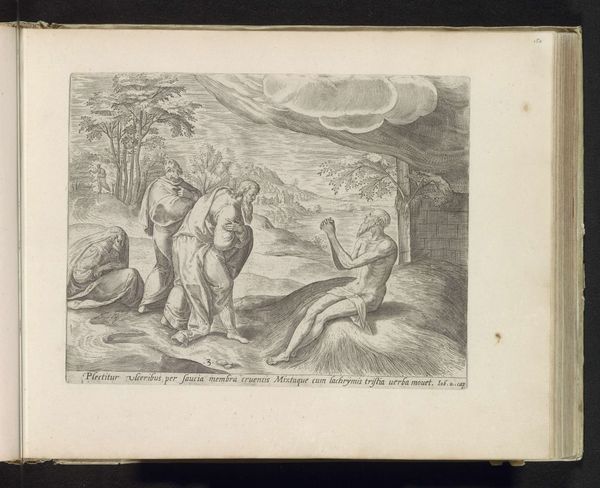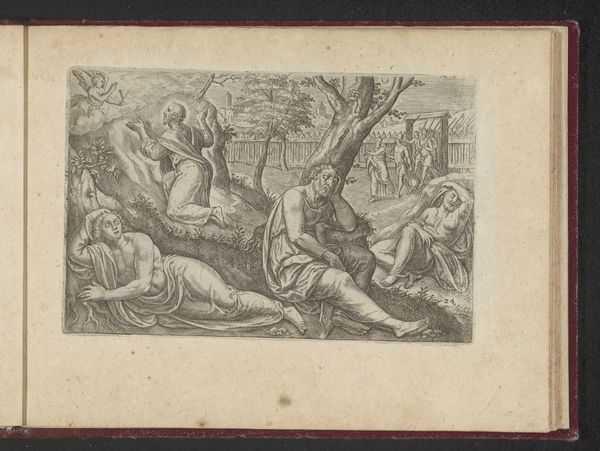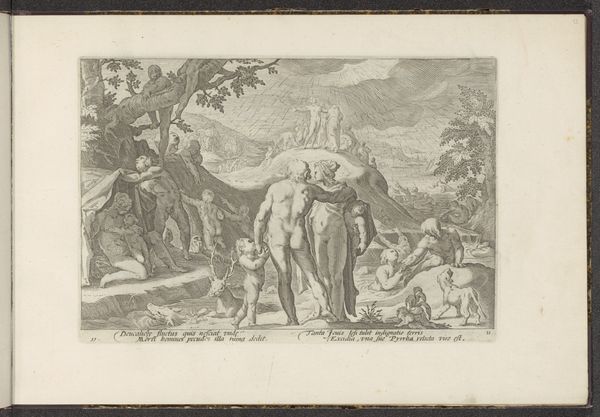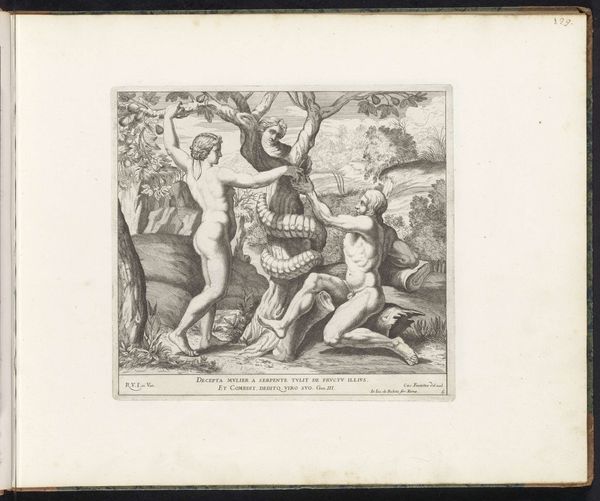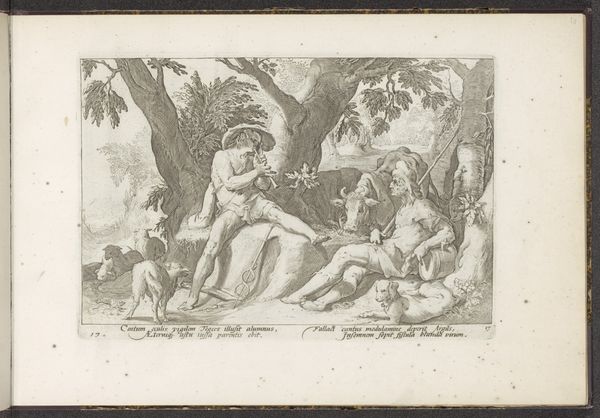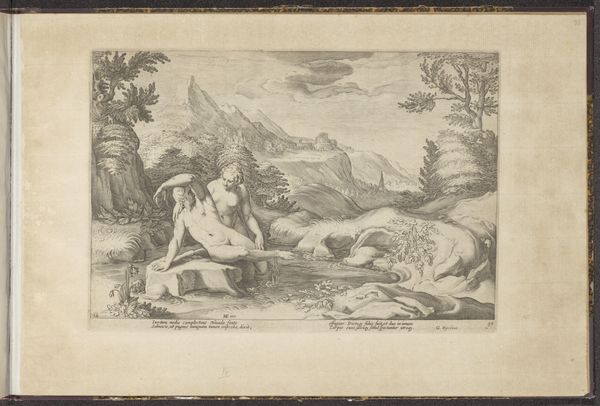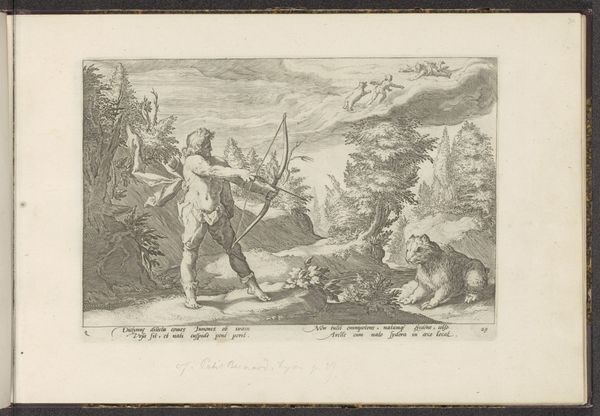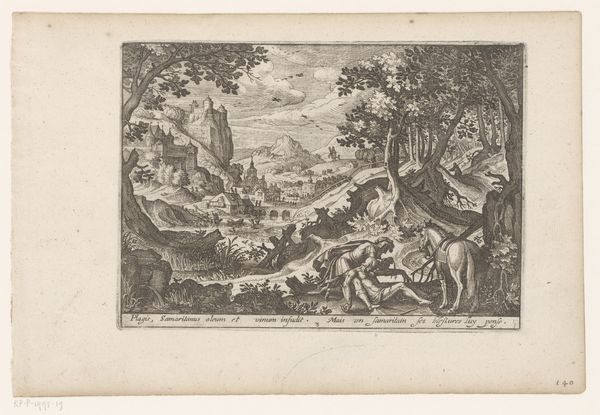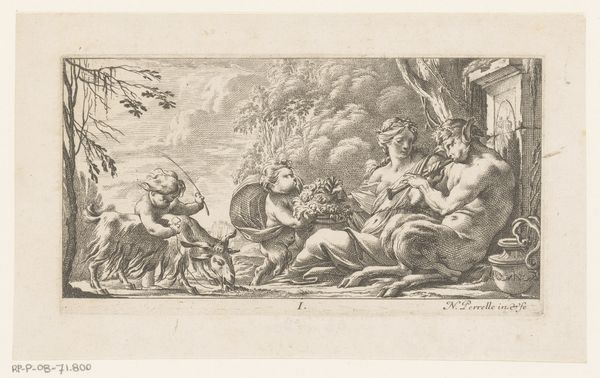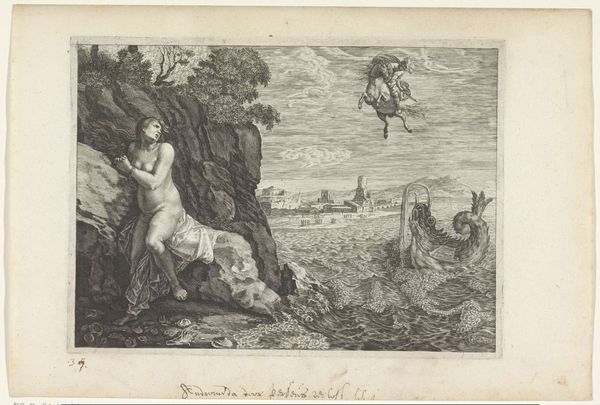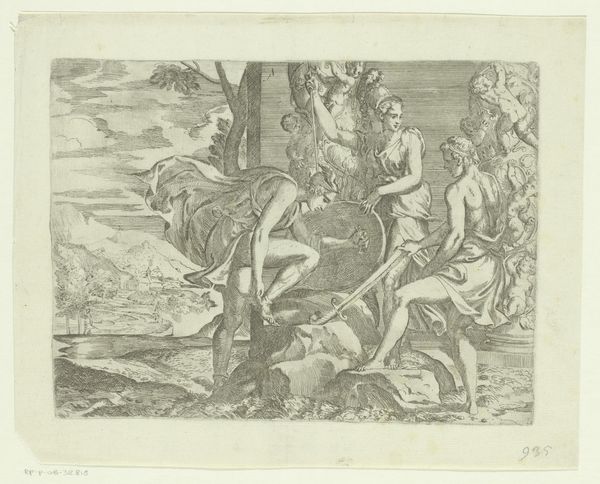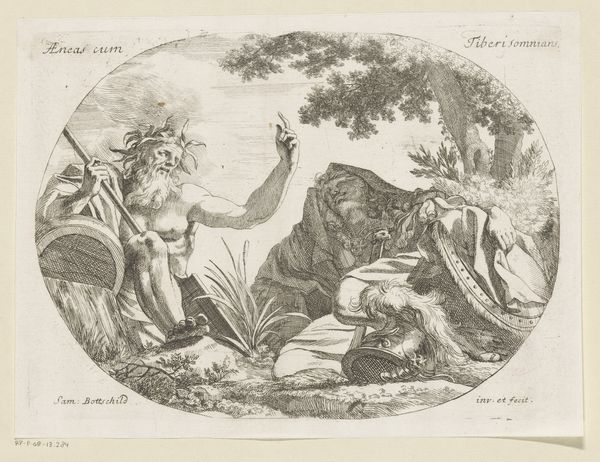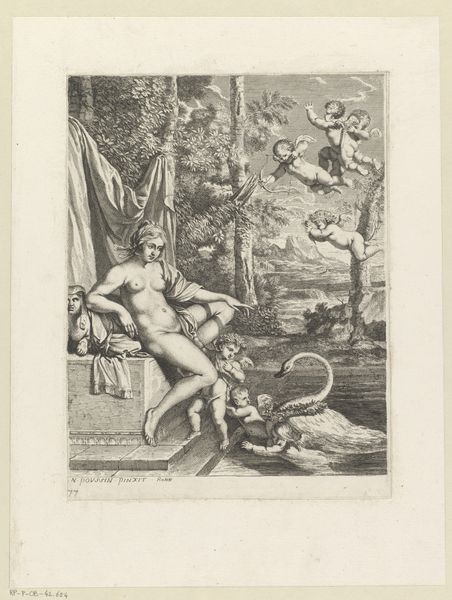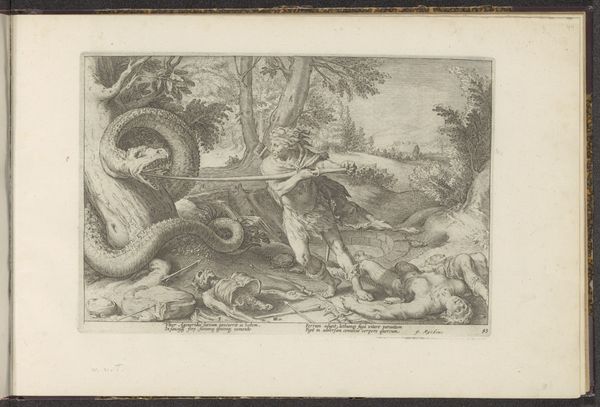
Dimensions: height 172 mm, width 253 mm
Copyright: Rijks Museum: Open Domain
Curator: This engraving is titled "Cadmus Sowing the Dragon's Teeth" made around 1590-1728, and is currently held at the Rijksmuseum. Editor: My first impression is that it's intense. The composition is dynamic, almost theatrical. The line work gives it a crisp but slightly chaotic feel. I wonder how this translates its themes of violence and creation? Curator: As an engraving, the process involved carefully incising lines into a metal plate, inking it, and then pressing it onto paper. Note the precision, likely demanding highly skilled labour to create. Think about the consumption of this piece too – was it designed for wealthy patrons, or were prints more accessible to the public at that time? Editor: Indeed. Goltzius situates the classical narrative of Cadmus, a Phoenician prince who founded Thebes, within a tumultuous visual field. We witness him enacting a pivotal moment – planting the teeth of a dragon he has slain. These teeth, once sown, spring forth into fully armed warriors, representing both creation and violent conflict. Curator: Looking closely, consider how the artist handles light and shadow to create depth. Notice how the varied pressure of the engraving tool renders different tonal values, achieving a striking contrast within a monochrome palette. This elevates a simple piece of material, to great effect! Editor: And let's think critically about this 'founding myth.' Is it glorifying a colonial endeavor? Cadmus's story can be seen as a narrative of claiming and settling land. The engraving invites us to reflect on the myth’s potentially troubling aspects in its relation to violence, power, and the very idea of civilization being built on these foundations. Curator: I appreciate your perspective. Thinking about the physicality of the engraving again: this is clearly from a time where the skills required in material manipulation were essential. Compare this to today’s digital reproduction: different skills, different materiality, different audiences and markets. Editor: Agreed. It's a powerful image precisely because it holds so many contradictions and open-ended questions about power dynamics, both within its historical context and for our own.
Comments
No comments
Be the first to comment and join the conversation on the ultimate creative platform.
